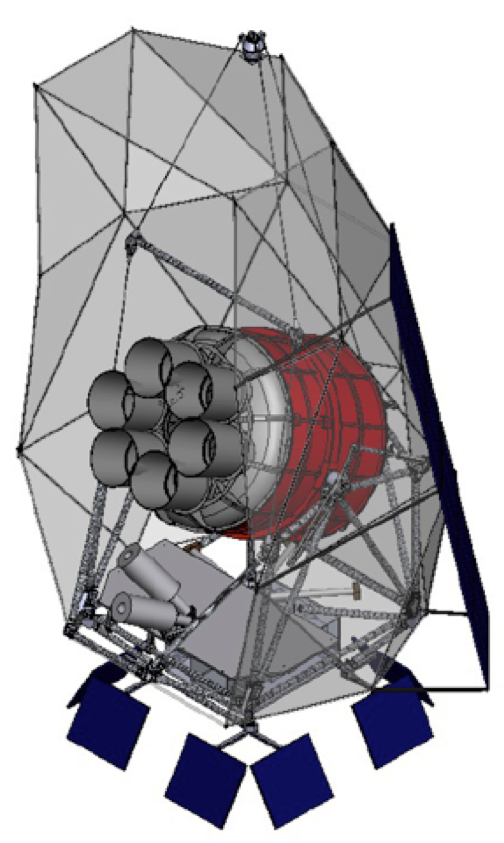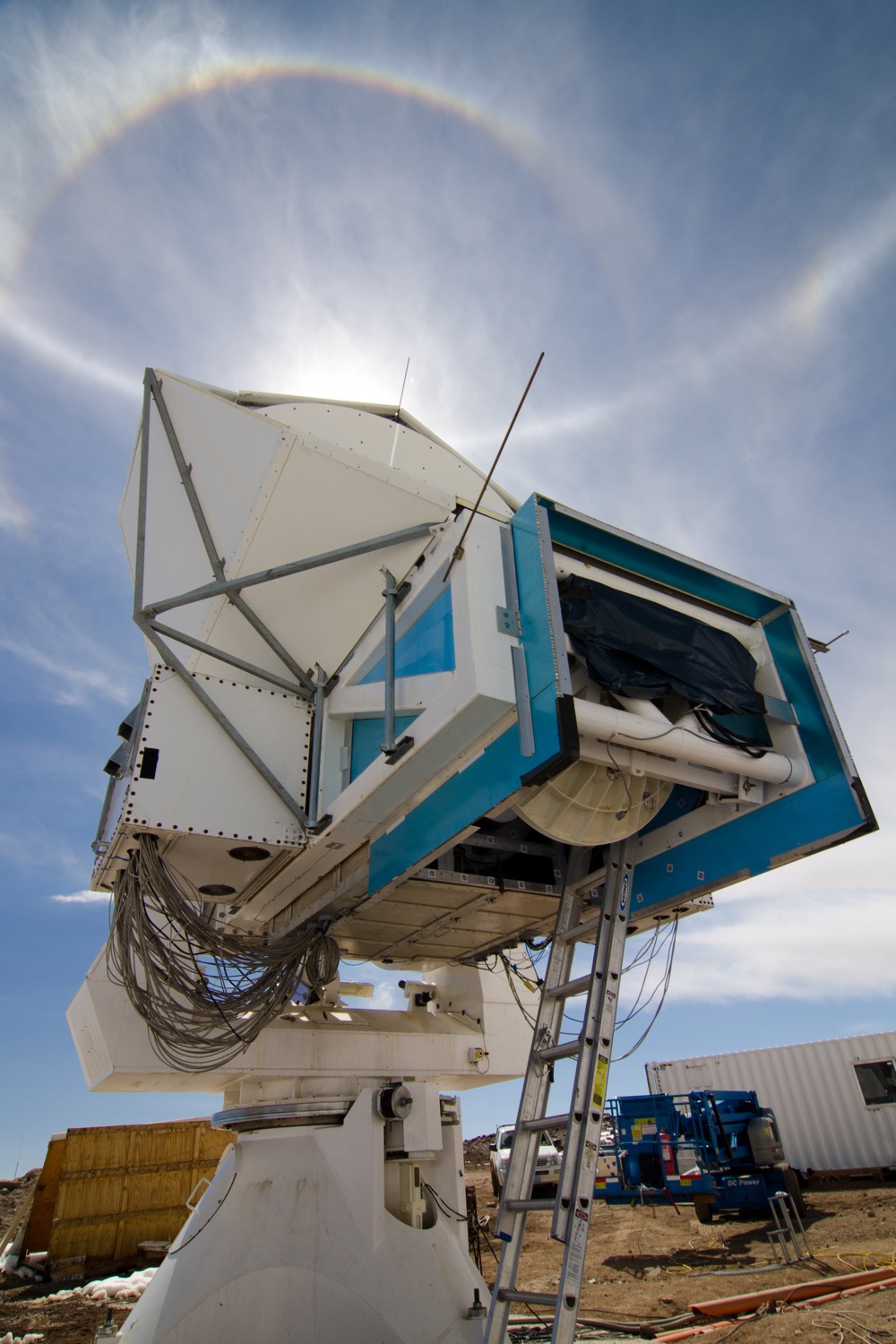My research interests lie in developing the next generation of millimeter wave polarimeters and data analysis tools necessary to precisely characterize the cosmic microwave background (CMB) polarization. The CMB polarization provides a unique window into both the ultra-high energy physics of the early universe and structure formation in the later universe. I get to spend my days playing with cryogenics, ultra-sensitive detector technologies, and having fun with code to help push those research frontiers.
I currently work on two projects to measure the CMB polarization:
SPIDER:
 At Princeton, I work on the SPIDER experiment. SPIDER is a balloon-borne polarimeter designed to measure the CMB polarization on large angular scales.
The experiment consists of six independent refractive telescopes in a liquid helium cooled cryostat that will fly aboard an Antarctic long duration stratospheric balloon (LDB) payload. The individual telescopes are based upon optics and detector technologies successfully utilized in the BICEP2 experiment. We're currently integrating the experiment in Antarctica for a launch in December 2014.
At Princeton, I work on the SPIDER experiment. SPIDER is a balloon-borne polarimeter designed to measure the CMB polarization on large angular scales.
The experiment consists of six independent refractive telescopes in a liquid helium cooled cryostat that will fly aboard an Antarctic long duration stratospheric balloon (LDB) payload. The individual telescopes are based upon optics and detector technologies successfully utilized in the BICEP2 experiment. We're currently integrating the experiment in Antarctica for a launch in December 2014.
POLARBEAR:
 My thesis work at Berkeley focused on developing the receiver for the POLARBEAR experiment. POLARBEAR is a millimeter-wave polarimeter that utilizes ~1200 polarization sensitive antenna-coupled TES detectors. Its combination of sensitivity and angular resolution will enable POLARBEAR to measure the B-mode polarization of the CMB over a large range of angular resolution, enabling studies of both the very early and late universe. POLARBEAR is currently in its first observational campaign in the Atacama Desert of Chile. I continue to work on POLARBEAR, contributing on both analysis of our first and second seasons of data and on the design of POLARBEAR-2, the multi-chroic successor to POLARBEAR.
My thesis work at Berkeley focused on developing the receiver for the POLARBEAR experiment. POLARBEAR is a millimeter-wave polarimeter that utilizes ~1200 polarization sensitive antenna-coupled TES detectors. Its combination of sensitivity and angular resolution will enable POLARBEAR to measure the B-mode polarization of the CMB over a large range of angular resolution, enabling studies of both the very early and late universe. POLARBEAR is currently in its first observational campaign in the Atacama Desert of Chile. I continue to work on POLARBEAR, contributing on both analysis of our first and second seasons of data and on the design of POLARBEAR-2, the multi-chroic successor to POLARBEAR.